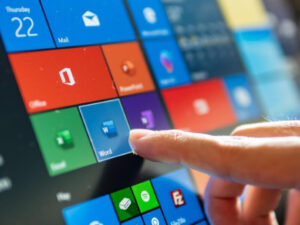Jack Wallen helps you piece together an affordable PC to run Linux on the desktop.

Image: iStockphoto/Wiyada Arunwaikit
When Linus Torvalds decided to make the move from Intel to AMD, one would have thought the Earth was about to crack open and suck us all into its hot molten core.
64 billion cores.
With infinite cache.
That didn’t happen. Even so, it was an exciting moment, especially when posts started to appear to show how you could build the same PC the creator of Linux now uses. That got me thinking–or, better yet, had me reminiscing.
I used to build my own PCs. It wasn’t out of necessity, it was out of desire. I enjoyed piecing together my one-of-a-kind computers, knowing every hand-picked part would run Linux without so much as a single issue. Putting the components together was kind of a ritual that culminated in the installation of my chosen operating system.
Those were the days. I remember them quite fondly.
I haven’t built my own PC in a while. Why? Thanks to System76, I’ve found PC nirvana with their Thelio. And, if I’m being quite honest, there’s little chance I’m going to build a system as perfect as their machine. At a base price of $899.00, you really cannot go wrong purchasing that working piece of art.
But there’s always the draw of hand-picking those components and carefully assembling them into your very own computer.
I built that.
It’s a badge of honor.
So, I thought I’d write a piece about building a Linux PC, revealing the components I’d select for a modern machine to handle modern computing.
But let’s be a bit specific here–we’re not building a computer for gaming. Instead, we’ll create a computer that can handle developing, documents, browsing with 20+ tabs, working with large high-res images in GIMP, audio recording–the average tasks for the average user. No big data, no clustering, and (again) no gaming. We’re not building a machine that will blow the hair off your head and make your eyes roll back into a permanent state of “Whoa!”
This is the computer you’d put together to serve everyday tasks, using the Linux operating system. We’re not folding genomes or deploying clusters at scale.
Are you ready? Let’s build.
SEE: Hiring Kit: Computer Hardware Engineer (TechRepublic Premium)
The case
I’ll preface this by saying at one point in my life, in order to save money, I built a caseless PC. I mounted the motherboard and the power supply to a wall and ran with it. It was cool and it was a heck of a conversation starter. We’re not going to do that. Instead, we’ll go with something fairly cheap and standard. However, the one thing we want to look out for is the ability to add drives. Most low-end cases only give you bays for two drives and, from my perspective, that’s never enough. In fact, my Thelio has bays for five total 3.5 drives and I could use two more.
But for this build, we’ll limit ourselves to four bays. The Corsair 200R offers that in a mid-tower form factor, and sells for around $64.99.
Total so far: $64.99
The power supply
We’ll couple the Corsair case with a Cooler Master MWE Gold 650 Watt power supply, which runs around $99.00. Nothing fancy, just enough to power everything with room to grow.
Total so far: $163.99
The motherboard
Here’s where I might surprise everyone. Remember, this isn’t a gaming machine, so our GPU needs won’t be terribly demanding. For that, we’ll go with a motherboard/CPU combination that includes a graphics chip. Since we’re going to go with AMD, let’s use the MSI MPG X570 Plus motherboard. This choice gives us plenty of room for expansion and costs around $169.99. Because this motherboard includes an onboard Gigabit wired networking, we’ll save a bit more money.
Total so far: $333.98
The CPU
Let’s get this out of the way: We’re not going with an AMD Ryzen Threadripper 3990X. Why? Because that CPU would destroy our budget and then some (coming in at under $3,500.00). Instead, we’ll tone it down quite a bit and go with the AMD Ryzen 5 3400G. This CPU includes a Radeon Vega 11 GPU, so we’ll save some scratch there. This is the same CPU that ships with the lower-end System76 Thelio desktops, so we can count on it working (certainly with Pop!_OS).
The cost of this CPU is surprisingly cheap, at $149.99.
Total so far: $483.97
The RAM
I’ve reached the point in my life where anything under 16GB of RAM is not enough. But since RAM is currently pretty cheap, we’ll go with 32GB and we’ll use four 8GB sticks of G.Skill Ripjaw DDR 3600 RAM. With 32 GB of RAM, this machine will stand up to just about any typical task you throw at it. This will set us back $139.98.
Total so far: $623.95
Storage
I’ve used all kinds of drives, but in modern PCs, you’d be foolish to go with anything but an SSD. To that end, we’ll stick with the SSDs that I’ve never had a problem with: Samsung. In this case, we’ll go with two 1TB Samsung 970 Evo 1 drives. With a 1024 MB cache, these drives perform really well for average tasks. These run $179.99 each.
Total so far: $983.93
And there you have it. We managed to stay under our $1,000.00 goal by $16.07. Shipping will likely eat that up (and probably a bit more). But, the total cost of the components succeed the goal. Of course, you’ll have to use that crusty old mouse and keyboard you had sitting around from the last computer you had. Just make sure to pop off the keys and vacuum your lunch out of it before attaching it to your newly-built machine. As for a monitor? You’re on your own.
Sure, many of these components tend to be in the lower- to mid-range, but our goal wasn’t to build a beast. What we did build, however, was a serviceable computer that should work quite well with Linux and serve your day-to-day tasks.
This might not be the computer you’d build personally, but if you’re new to the realm of customizing your own PC, this could be a launching point to get a great Linux PC for under a grand.
What would your custom Linux PC look like?
Also see
Source of Article



